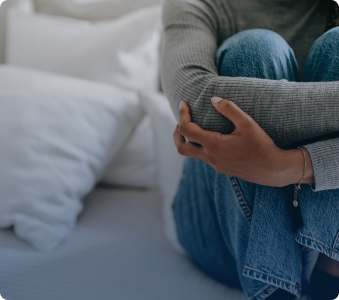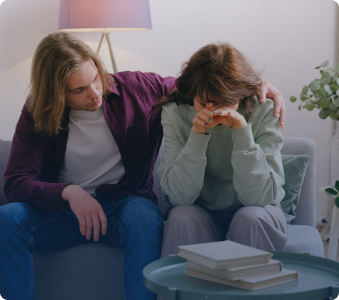The term Indigenous/Native refers to all groups who lived in the U.S. prior to colonization by European settlers. According to the U.S. Census, 1.7% of the U.S. population —or 5.2 million people — identified as American Indian or Alaska Native alone or in combination with another race.
These complex societies lived and thrived here for centuries before Europeans — a reality that is often ignored when talking about Indigenous people.
Referring to Indigenous/Native people as “American Indians” can be somewhat misleading, as the term “America” was not used until after colonization. The same can be said about the term “Indian” — it was a name applied by colonizers who mistakenly thought they had arrived in India. Many Indigenous/Native people prefer to use the original nation names that have existed for thousands of years. It is not unusual for many to consider that identity separate from their identities as “Americans.”
Many Indigenous/Native groups believe that they have lived here since “time immemorial,” or since man first inhabited the earth, but there is no clear or precise time frame. Prior to the arrival of the first colonists, there were approximately 100 million Indigenous people and thousands of tribes in what is now called the United States.
However, many U.S. data sources still use terms such as “American Indian” and/or “Alaska Native” when providing information about these populations, such as the prevalence of mental health conditions. Any terms that accompany statistics listed on this page have been taken from the original data source.
Today, there are 574 federally recognized tribal nations (variously called tribes, nations, bands, pueblos, communities and native villages) in this country. These nations include over 200 Indigenous languages (and many dialects within those languages) and countless diverse cultures, traditions and histories within those nations. Additionally, there are tribes located throughout the U.S. that do not have official recognition.
Important Factors Of Indigenous/Native Mental Health
Although there is a huge amount of diversity among Indigenous/Native communities in the U.S., many of these communities share some cultural threads. Having a close attachment to land and nature, sharing connectedness with the past and with others in the community, nurturing strong family bonds, following the wisdom of Elders and fostering meaningful traditions are commonly shared as part of one’s Indigenous identity.
Many of these shared cultural experiences are protective factors for mental health, but members of Indigenous/Native communities also shoulder many burdens, including economic and political marginalization, education disparities, discrimination and mental health challenges rooted in a long history of trauma.
Much of traditional Native life is organized around a deep respect for the land and the resources provided by “Mother Earth” to feed, clothe and shelter us. Villages or communities were spread out in different areas to prevent overuse of resources, and sustainability was a priority while harvesting plants and catching animals and fish.
This attachment to the land is a large reason why colonization was so devastating – Indigenous communities faced mass violence, displacement and forced removal as colonizers imposed borders, cut down trees and blocked waterways. The effects of this historical trauma and economic impact is still felt today.
Mental health and emotional well-being among Indigenous/Native people are often closely tied to cultural traditions of prayer and ceremony. More recently, these supportive cultural traditions have been endangered by forced assimilation. The process of forced assimilation included children being forcefully separated from their communities to be educated in boarding schools, where their Native culture and languages were discouraged through extreme discipline and violence, which often resulted in death.
Due to this history and continued discrimination and lack of opportunity, there are thousands of Native people suffering from multi-generational trauma. The result of this trauma includes mental illness, substance use disorders and suicide. In 2019, nearly one fifth (18.7%) of American Indian/Alaska Native adults experienced mental illness in the last year. Some studies have shown alcohol and other drug use begins at younger ages — and at higher rates — than for other ethnic groups. Suicide rates for American Indian/Alaska Native adolescents are exceedingly high, over double the rate of white adolescents.
Barriers To Mental Health Care
Despite the need for mental health care, very few who need treatment access it. The following represent some of the key barriers to adequate mental health care for Indigenous/Native communities.
Inadequate Funding
The federal government guaranteed the health, safety and welfare of tribal nations in exchange for millions of acres of tribal lands. However, a long-standing history of underfunding of the Indian Health Service (IHS) has led to significant challenges in providing services. These challenges mean that the overall quality, availability and accessibility of mental health services remain a major barrier for many Indigenous/Native populations.
Rural and Isolated Locations
While not all Indigenous/Native people live in rural and isolated areas, many still do, and they don’t have appropriate mental health services to meet their needs. Access is even further limited because most of clinics and hospitals within the IHS are located on reservations, and the majority of Indigenous/Native people live outside of tribal areas.
Mistrust of Government Services
As a result of the government’s treatment of this population — including broken treaties, forced removal from their land and the effort to eradicate native culture — many in the Indigenous/Native community do not trust services provided by the federal government.
Lack of Cultural Competence
Cultural competence is incredibly important when it comes to serving the mental health needs of Indigenous/Native populations. Many members of this community hold a fundamentally different understanding of mental health than their “Western” counterparts; therefore, they may not see value in the treatments offered.
Not all mental and behavioral health programs provide treatment in a culturally, spiritually and traditionally appropriate manner. Part of the issue is due to the lack of clear, consistent and measurable definitions — meaning that programs modified for Indigenous/Native communities often do not meet criteria to be designated as “best practices.” Additionally, those who have intent to be culturally competent must have extensive training in spirituality and traditional values taught to them by a qualified Elder, which can be a long process. Lastly, charging money for providing services is contrary to traditional practices who provide services for free.
Language Barriers
Approximately 372,000 Native people speak a language other than English at home. Language traditions are especially strong in the American Southwest and in Alaska; nearly 200,000 individuals speak Navajo or Yup’ik. There are many areas where differences in language are an important consideration for treatment. For example, words such as “depressed” and “anxious” are absent from some Native languages.
Even when a person does speak English, it can be challenging for them to convey their feelings and experiences in English. Additionally, it can be frustrating when they don’t understand the true meaning of what a provider is trying to say.
Poverty and Unemployment
High rates of poverty among Indigenous/Native populations create additional barriers to care. In the U.S., estimates suggest that Native Americans are about twice as likely as non-Native, non-Hispanic whites to have incomes below the poverty line. Many live without clean water or adequate sanitation, electricity, adequate food or reliable access to transportation. Additionally, American Indian/Alaska Native people are much more likely to be unemployed compared to the overall U.S. population – a disparity further increased by the COVID-19 pandemic.
How To Seek Culturally Competent Care
When meeting with a provider, it is important to ask questions to get a sense of their level of cultural sensitivity. Providers expect and welcome questions from their patients since this helps them better understand what is important in their treatment. Here are some questions to ask:
- Have you treated other Indigenous/Native people?
- Have you received training in spirituality or traditional practices?
- How do you see our cultural backgrounds influencing our communication and my treatment?
- Do you have training in trauma-informed care?
Whether seeking help from a primary care doctor or a mental health professional, you should leave the appointment feeling heard and respected. The amount of respect shown by the provider is the most important basis for an effective treatment relationship. It is essential see an effort on the part of the provider to: overcome any barriers, understand the past and present experiences of Indigenous/Native peoples and have respect and empathy towards alternative practices and worldviews.
You may want to ask yourself:
- Did my provider communicate effectively with me?
- Is my provider willing to integrate my beliefs, practices, identity and cultural background into my treatment plan?
- Did I feel like I was treated with respect and dignity?
- Do I feel like my provider understands and relates well with me?
The relationship and communication between a person and their mental health provider is a key aspect of treatment. It’s very important for a person to feel that their identity is understood by their provider in order to receive the best possible support and care.
Resources
Please note: The resources included here are not endorsed by NAMI, and NAMI is not responsible for the content of or service provided by any of these resources.
Centers for Medicare & Medicaid Services American Indian/Alaska Native Information and Resources
The Center for Medicare and Medicaid Services (CMS) Division of Tribal Affairs works closely with American Indian and Alaska Native (AIAN) communities and leaders to enable access to culturally competent healthcare to eligible to CMS beneficiaries in Indian Country.
Circles of Care: Creating Models of Care for American Indian and Alaska Native Youth
Circles of Care describes the Substance Abuse and Mental Health Services Administration’s grant program, Circles of Care, which develops culturally appropriate interventions to serve youth with serious behavioral health challenges.
Indian Health Service
IHS provides a comprehensive health service delivery system for approximately 2.6 million American Indians and Alaska Natives who belong to 574 federally recognized tribes.
Indian Country Child Trauma Center (ICCTC) (405-271-8858)
The ICCTC is a SAMHSA-funded program established to develop training, technical assistance, program development and resources on trauma-informed care to tribal communities. Oklahoma City-based center specializes in treatment of Native American children that have experienced trauma and sexual abuse.
One Sky Center (503-970-7895)
One Sky Center provides resources and a “Find a Therapist” locator for treating mental health and substance use disorder within Native American communities.
StrongHearts Native HelpLine (844-762-8483)
StrongHearts Native Helpline is a domestic violence and dating violence helpline for American Indians and Alaska Natives, offering culturally appropriate support daily from 7 a.m. to 10 p.m. CT via phone and online chat. StrongHearts Native Helpline’s one-on-one chat sessions with advocates can be accessed by clicking on the “Chat Now” icon at strongheartshelpline.org.

